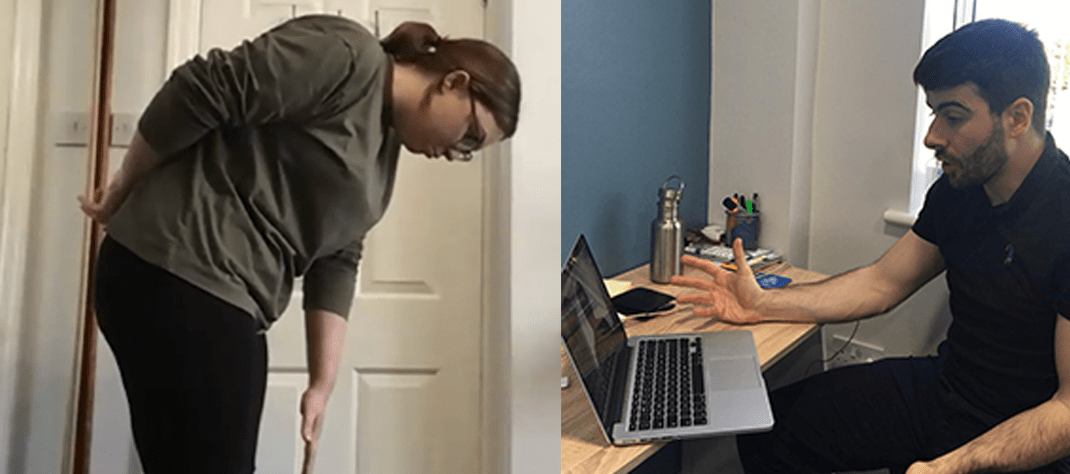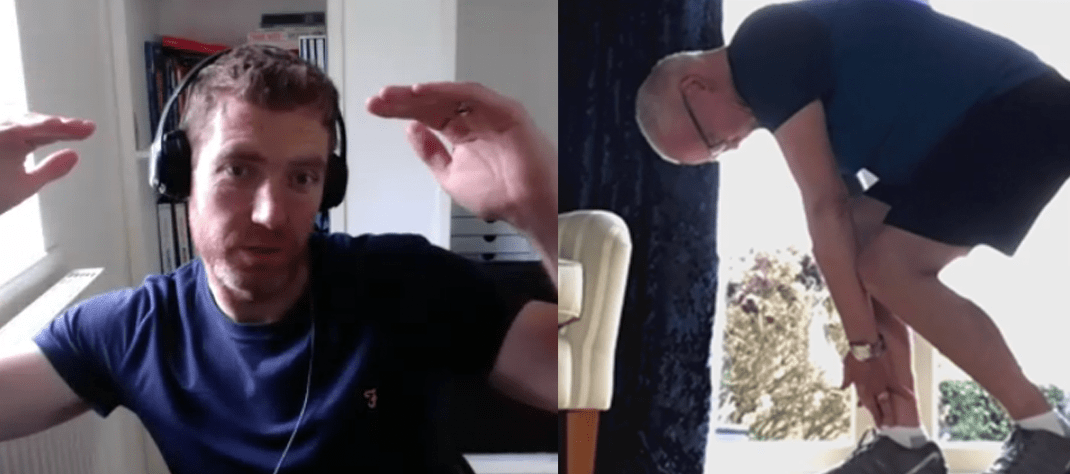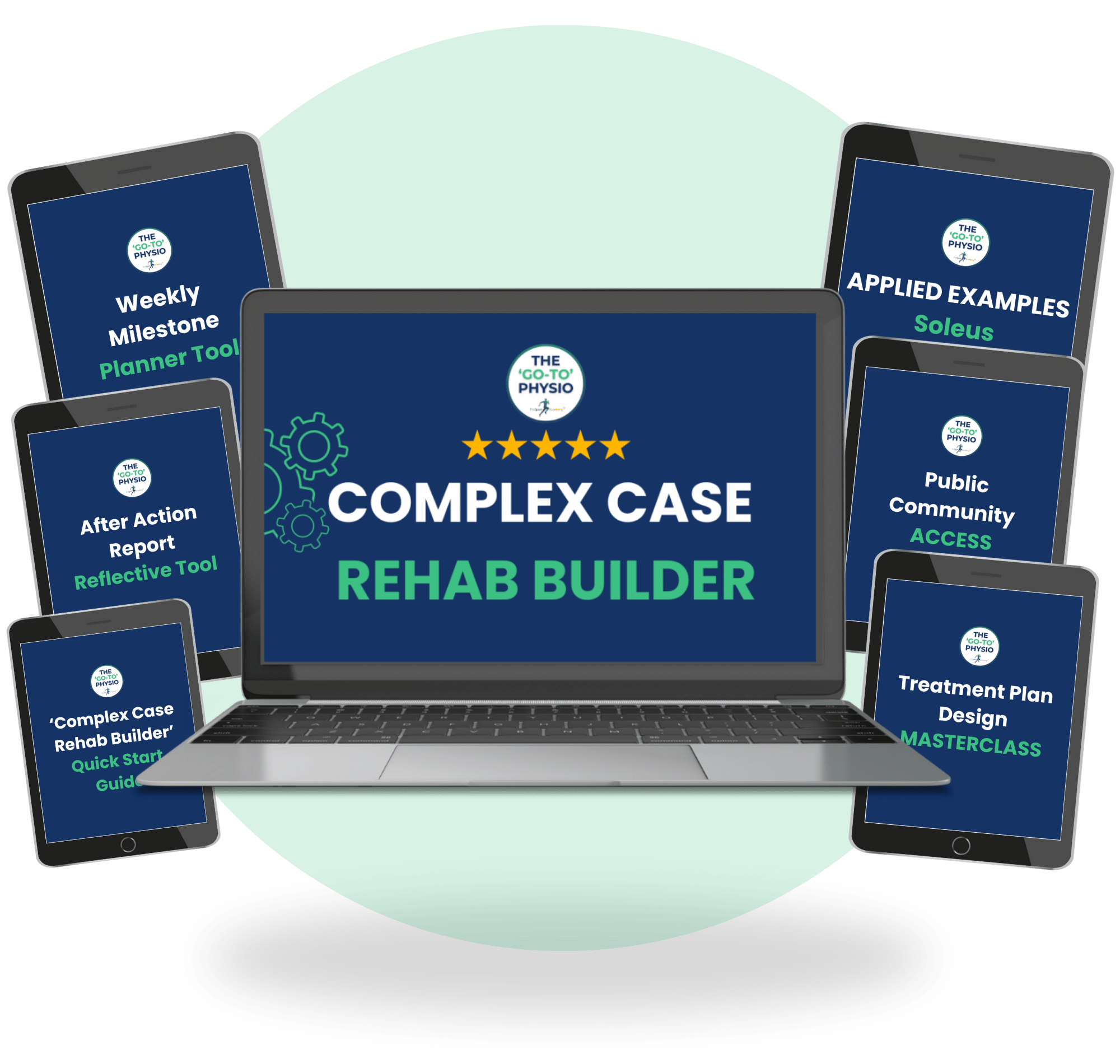
Preview: number 20 surprised me
Hey,
Although I’d done telehealth appointments with athletes and odd patients previously…
We’d never promoted it as a service.
Over the course of the last 3 months, we’ve completed 369 Telehealth appointments and growing…
Here are mine and Shane’s (head coach in the mentorship) 21 biggest lessons from over 369 Telehealth sessions…
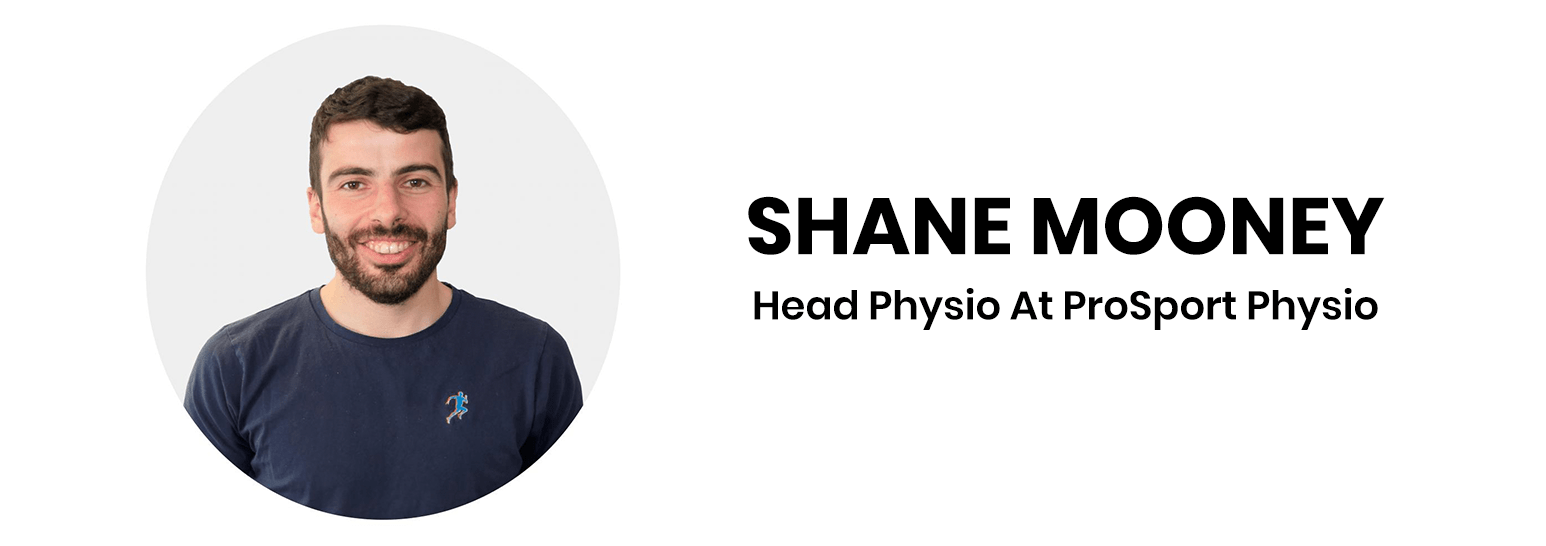
1) I use my hands-on techniques as a safety net when I’m in the clinic
During lockdown telehealth appointments… the opportunity to get the patient on the bed and get short term changes with my heads was not there.
This meant that I had to use my critical thinking skills at a higher level and it definitely made be a better therapist by challenging my clinical reasoning skills.
2) The importance of the subjective assessment
When you can’t use a lot of your objective assessment tools that you might use in the clinic, or when the patients camera set up isn’t great to see their movements, the subjective assessment really helps you focus in on what you need to check… so you can prioritize what your looking for in the objective assessment. Slowing this down and taking your time getting the information you need is essential.
3) 6 hours vs 6 reps
Patients need coaching and guidance in what they are doing throughout the day… and not an exercise program of 3 sets of 6 reps.
This is easier online than it is in person as the patient is generally in their own home… a bit more relaxed, and comfortable sharing the information you need.
4) The patient needs to feel it
Sometimes in the clinic it’s easy to rush things and jump straight into the treatment.
Over telehealth you have to get the patient to verbalise how one position feels compared to another etc and make sure that they feel the difference.
5) We can still do 99% of what we do online
With a bit of critical thinking, there are workarounds for everything we do in person even with the hands.
We need to understand the WHAT and WHY we are trying to influence with our hands and once we know that, we can reason other ways to do things.
6) Patients who are unsure about telehealth will give it a try if YOU are confident in delivery
Any patient who didn’t want to book a telehealth appointment with me I got on the phone.
Once you tell them with confidence that you will be able to help them with telehealth they are more than willing to try.
If you’re not confident they will read that.
7) It’s a much less ‘rushed’ environment
Even though on some days I had 10 clients back to back on telehealth, it feels a lot less rushed than in the clinic.
It’s because it forces you to slow everything down and there’s less expectations of a “quick-fix”
8) For some patients, telehealth trumps in-person.
For some patients… once you take away that expectation of hands on and a ‘quick fix’ they actually make much better progress.
This is especially true of the persistent pain cases.
9) You get to know your patients better
There’s something about speaking to someone when they’re in their own home. You get more of an insight into their life – pets, kids, etc.
10) Patients are Grateful for any help you can give
There can be the expectation when a patient comes to you initially… that your hands on skills are the magic cure for pain… and they’ll come in for 1-2 sessions and be fine again.
This expectation is not there on telehealth and patients seem to understand more clearly the fact that we need to complete a full treatment plan… and gradually get back to 100%
Dave O’Sullivan
11) When you genuinely understand ‘WHAT’ your trying to achieve with a patient, your hands become irrelevant…
It’s not about your hands… it’s about getting the patient’s nervous system to tolerate load and get to the next level of the graded exposure program.
Thats the true value in having a structure, a system and understanding why you are doing things.
The structure and the system really came to the fore for me with Telehealth patients.
(On a side note I was also very surprised at how many therapists emailed me about the lack of confidence in doing an assessment without their hands… I made the presumption it would be the treatment they would struggle with most).
12) I was still reliant on my hands for certain muscle groups
I’ve realised while I preach about how important it is not to be reliant on your hands… there were still muscle groups such as the iliocostalis, long head of triceps and biceps that I was still very reliant on my hands…
This forced me to think of new ways to desensitise these tissues… develop new exercises that I’ve already started using instead in the clinic with in-person appointments.
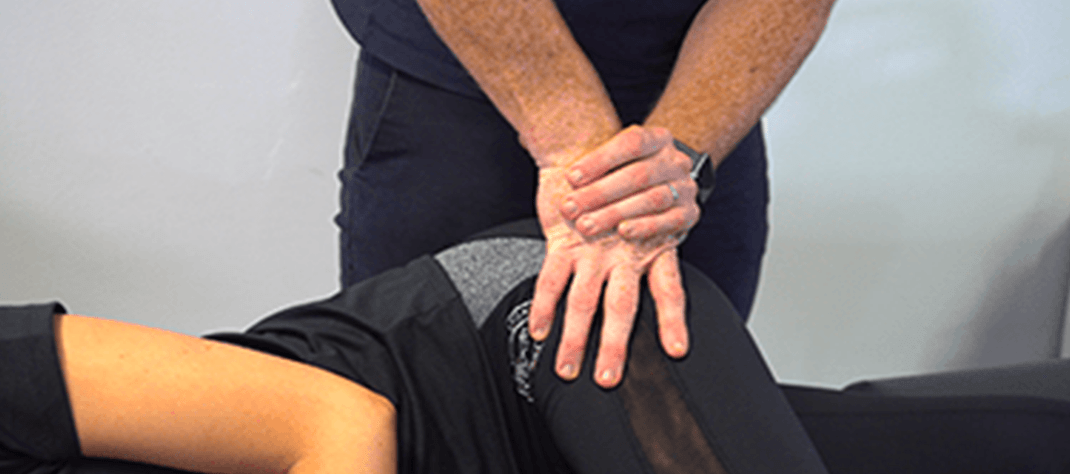
13) Attention and authority is everything for patient adherence
Doing telehealth sessions with older patients who have siblings or partners in the room can really distract them… from the session and lose vital engagement.
Some patients don’t seem to give you their full attention from my experience and that is a big problem for adherence.
If the patient didn’t quite hear me or process the information… family members jumping in and communicating to them can really overwhelm them from my experience so far.
This is something I need to improve on. I’ve reflected on one particular case and I’ll be posting it in my Mentorship group shortly.
Losing the attention of the patient and authority, is a downhill battle.
14) Going from higher to lower loads works just as a well as going from lower to higher for assessments
During the assessment, while in the Mentorship I teach finding a baseline level of load tolerance from little load to higher increments… I had to reverse engineer with going higher levels of loading in the assessment and come back down.
For example, rather than using a muscle testing style movement that I use to check coordinative abilities… we had to go straight to a lunge or higher level loading such as my hamstring load tolerance test.
If they couldn’t pass then we’d go backwards rather than working forwards all the time in the clinic.
I don’t think either way is best, and I think both are useful.
15) My exercise cues have improved even more
While sometimes with some of my exercises… I might guide my patients with my hands… I found doing telehealth that my cues got better and my words got clearer.
16) The low back muscles still need some load tolerance
This one was huge for me. I spend most my time helping the low back to relax, usually indirectly through lengthening the diaphragm or hands on treatment.
While I was able to help a lot of patients as usual, some needed that little bit more. When I started to put submaximal levels of load through iliocostalis for example, I say big changes in the ribcage movement that I didn’t see before.
I’ve been guilty of spending too much time on the other side of the ribcage. I’ve since developed a step by step graded exposure plan for iliocostalis and it’s really making a big difference to a lot of patients day to day lives.
I would have never got this (or got it this quickly) without this situation.
17) Patients need a lot of reassurance when they feel their low back working
This was a byproduct of the previous lesson but wow. Some patients got so worried once they felt their low back muscles working. They naturally assumed it was a bad thing.
18) Telehealth kept my clinic breathing during the lockdown.
While revenue was seriously affected, telehealth allowed us to fight another day.
While the business will now be restructing it’s business model… telehealth will be a big part of that going forwards.
19) Telehealth is a great risk mitigation tool for your business.
I’ve said it before, the most dangerous number clinically or in business is one. Relying on one exercise, one technique, one way of income. Telehealth is a great way to risk mitigate your business.
I would encourage all therapists to consider keeping this service going… to help people feel this way of therapy is ‘normal’… in case something like this happens again.
20) Telehealth will really show you where you REALLY are at as a therapist.
With telehealth, there is no place to hide. You need to have a clarity in your mind about where the patient is and where they need to get to.
While I’m a big fan of structure and step by step systems that still allow for the individuality of the patient… the mentorship system came to the fore and took very little change for me.
Of course I needed to reassure therapists on my mentorship… and help them see how to adjust… and it was amazing to see how many therapists confidence grew so quickly.
21) Telehealth is going to change the quality and results in my own mentorship program
While you may have seen my clinical reasoning bootcamp on my Youtube page… Telehealth will help me further improve the Mentorship program .
It is so easy to record the sessions and share (with the patient’s permission of course) than in-person sessions.
The sessions I’ve had with people from all over the UK, Ireland and even Egypt… is great to show therapists how to apply the mentorship program in the real world.
I have over 12 cases from start to finish to share now with some many massive teaching points in each case. It’s really going to help therapists ‘understand’ on a new level.
This will help therapists get confidence and clarity even quicker.
Have a great day building people up
Dave
P.S If you haven’t checked out the clinical reasoning bootcamp sessions yet or finished them all, I’ve left them up on my Youtube for another few weeks.
These are real cases that many of these lessons were learned.
Click the button below to take a look.
Get Your FREE Copy Of The Amazon #1 Bestseller That Holds The Secret To Confidently Treating Any Patient!
Download a Free ‘ebook’ copy of the 8-Step ‘World Cup’ Treatment Plan that helped my private patients achieve full recovery and made me a ‘go-to’ physio for complex cases…
